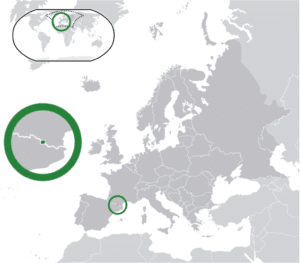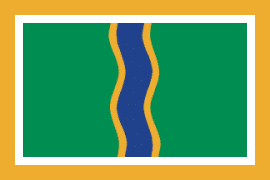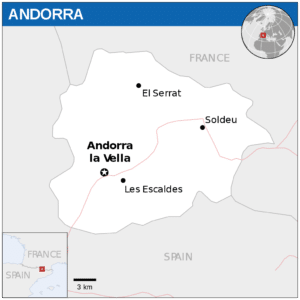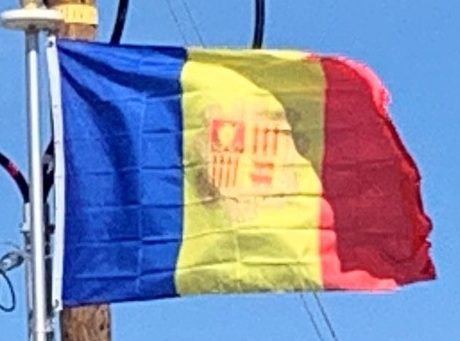Introduction:
Andorra, officially the Principality of Andorra, also called the Principality of the Valleys of Andorra, is a sovereign landlocked microstate on the Iberian Peninsula, in the eastern Pyrenees, bordering France to the north and Spain to the south.

Believed to have been created by Charlemagne, Andorra was ruled by the Count of Urgell until 988, when it was transferred to the Roman Catholic Diocese of Urgell, and the present principality was formed by a charter in 1278. It is known as a principality as it is a diarchy headed by two Princes: the Catholic Bishop of Urgell in Catalonia, Spain, and the President of France.
Andorra is the sixth-smallest nation in Europe, having an area of 181 square miles and a population of approximately 77,281. The Andorran people are a Romance ethnic group of originally Catalan descent. Andorra is the 16th-smallest country in the world by land and the 11th-smallest by population. Its capital, Andorra la Vella, is the highest capital city in Europe, at an elevation of 3,356 feet above sea level. The official language is Catalan; Spanish, Portuguese, and French are also commonly spoken.

Tourism in Andorra sees an estimated 10.2 million visitors annually. It is not a member of the European Union, but the euro is its official currency. It has been a member of the United Nations since 1993. In 2013, Andorra had the highest life expectancy in the world at 81 years, according to the Global Burden of Disease Study.
Etymology:
The origin of the word Andorra is unknown, although several hypotheses have been formulated. The oldest derivation of the word Andorra is from the Greek historian Polybius (The Histories III, 35, 1) who describes the Andosins, an Iberian Pre-Roman tribe, as historically located in the valleys of Andorra and facing the Carthaginian army in its passage through the Pyrenees during the Punic Wars. The word Andosini or Andosins (Ἀνδοσίνοι) may derive from the Basque handia whose meaning is “big” or “giant”. The Andorran toponymy shows evidence of Basque language in the area. Another theory suggests that the word Andorra may derive from the old word Anorra that contains the Basque word ur (water).

Another theory suggests that Andorra may derive from Arabic al-durra, meaning “The forest” (الدرة). When the Moors colonized the Iberian Peninsula, the valleys of the Pyrenees were covered by large tracts of forest, and other regions and towns, also administered by Muslims, received this designation.
Other theories suggest that the term derives from the Navarro-Aragonese andurrial, which means “land covered with bushes” or “scrubland”.
The folk etymology holds that Charlemagne had named the region as a reference to the Biblical Canaanite valley of Endor or Andor (where the Midianites had been defeated), a name also bestowed by his heir and son Louis le Debonnaire after defeating the Moors in the “wild valleys of Hell”.
History:
Prehistory:
La Balma de la Margineda, found by archaeologists at Sant Julia de Loria, was first settled in 9,500 BC as a passing place between the two sides of the Pyrenees. The seasonal camp was perfectly located for hunting and fishing by the groups of hunter-gatherers from Ariege and Segre.
